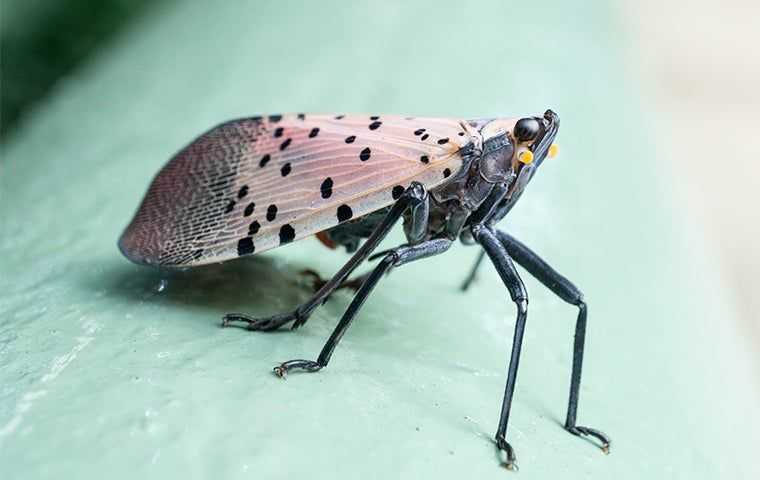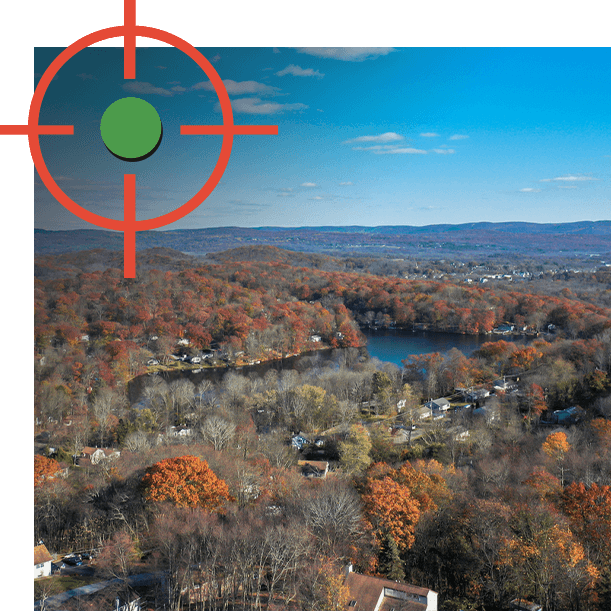
Spotted Lanternfly Control & Prevention Services
Start Your Journey to Effective Pest Management
Spotted lanternflies feed on and damage plants; learn about them and how to control and eliminate them here.
Understanding Spotted Lanternflies: What You Need to Know
Spotted lanternflies are insects introduced into the U.S. in Pennsylvania in 2014 and have spread throughout other parts of the eastern United States. These pests are extremely dangerous to our agricultural system, and populations of these insects need to be immediately destroyed.
Despite what their name and appearance may lead you to believe, spotted lanternflies are neither flies nor moths; they are plant hoppers. Plant hoppers are insects that have piercing mouthparts they use to feed on a plant. While these insects are winged, their primary mode of transportation is jumping or gliding.
Understanding what spotted lanternflies look like is vital to eliminating them from your Morristown property as quickly as possible.
Nymphs: Early Stages of Spotted Lanternflies
Female lay their eggs from September to mid-November; the insects hatch in early spring. Young nymphs are often mistaken for ticks; they are small and black with white markings on their body and legs. Older nymphs will keep their white spots but turn red right before becoming adults.
Adults: Identifying Mature Spotted Lanternflies
Adult spotted lanternfly bodies are black, their wings are pinkish-gray with black spots with tips that are black with gray veins. Their abdomens are yellow with black stripes. When their wings open, you can see they have red underwings.
The Dangers of Spotted Lanternflies: Why You Should Act Now
Spotted lanternflies pose significant dangers to their host trees, plants, and ecosystems. Their feeding habits cause plants to become stressed, making them susceptible to disease, other pests, and death. These insects move through areas in large populations and cause devastating damage in short periods of time.
Adult spotted lanternflies feed by sucking out a plant's sap; most of the sap comes back out of the spotted lanternfly as honeydew, a sugary waste product. Honeydew coats trees and plants and promotes the growth of a black sooty mold. In large amounts, black sooty mold can prevent the sun’s rays from reaching the plants and providing them with necessary nutrients.
Identifying the Source of Your Spotted Lanternfly Infestation
You are experiencing a spotted lanternfly infestation on your property because there are host trees present that they are using as a food source. They can find a way to your property on their own, or they can hitchhike. Spotted lanternfly eggs, nymphs, and adults are regularly transported from outdoor space to outdoor space in boxes, firewood, potted plants, or vehicles.
No matter how they get to your property, invasive spotted lanternflies will quickly establish large populations and spread throughout the area.
Common Locations to Find Spotted Lanternflies
The most common place to discover spotted lanternflies is on their preferred host tree, the tree of heaven (Ailanthus tree), an invasive deciduous tree native to China, but will also feed on a wide variety of trees and other plants.
These flies also attack and use as a food source:
- Grape vines
- Fruit-bearing trees
- Silver and red maple trees
- Willow trees
- Black walnut trees
- River birch trees
If you suspect you have spotted lanternflies on your property, immediately contact us so we can implement our spotted lanternfly reduction services.
```

Why Choose Trius Pest Management?
-
Personalized CareWe know our customers by name and we remember your preferences and account history in order to give you the best service possible.
-
Over 40 Years of ExperienceWith more than 40 years in business, you can feel confident that you're in the best hands possible.
-
Locally Owned & OperatedWe focus on nurturing personal relationships with our customers and care about providing you with the best experience possible.
-
Affordable TreatmentsWe offer payment plans and won’t tie you into a long-term contract or service agreement.
How do I get rid of spotted lanternflies?
Getting rid of pests like spotted lanternflies as quickly as possible is important to the ecosystem's health. If you ever spot what you even think is a spotted lanternfly on your property, immediately reach out to us for assistance. Our pest control professionals will perform a thorough inspection of your property to identify target trees and any egg masses on their trunks. We will then treat your property to eliminate these dangerous pests. To learn more about our annual spotted lanternfly treatments, reach out today.

Hear From Our Happy Customers
At Trius Pest Management, your satisfaction is our priority! See for yourself what people have to say about working with us.
-
“The tech gave me the requested 15-minute heads up, was on time, and explained very well.”- Albert B.
-
“Trius has been great in doing our insect/pest treatments.”- Jeremie G.
-
“The personnel are always so respectful and personable.”- Martha H.
-
“I would highly recommend them.”- Royce W.
Trius Pest Management's Blog
Want all the latest news or updates? Browse through our blog to read our most recent posts and featured articles.


